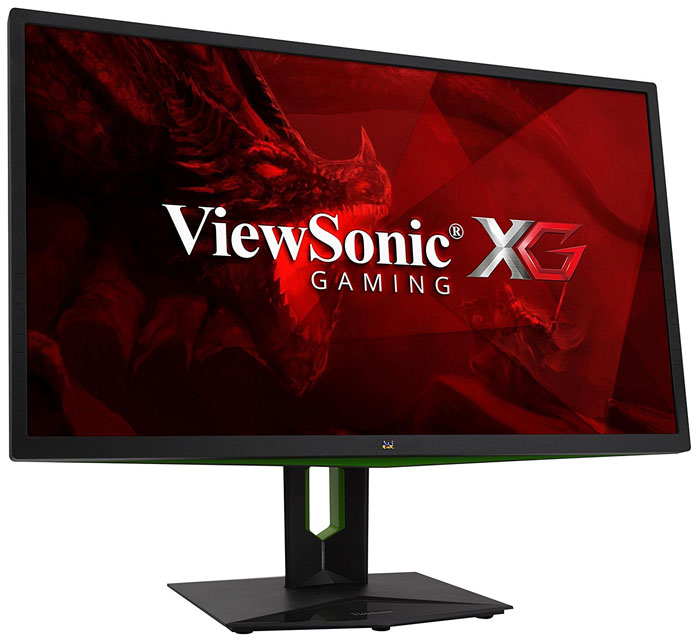Early Verdict
Slight flaws aside, the ViewSonic XG2703-GS is an excellent monitor. Benchmark tests reveal a few problems but they are easy to fix. And the uniformity issue we observed did not detract from real-world content in the slightest. The gameplay experience is addictive thanks to butter-smooth motion and perfect rendering. Detail stays strong no matter how fast the action becomes. When you get the framerates over 100, gaming becomes visceral and tactile. As an IPS panel, it’s priced in line with its premium competition. It isn’t cheap but it delivers an experience that makes you forget about cost. We think the XG2703-GS is worth serious consideration.
Pros
- +
165Hz
- +
G-Sync
- +
Ghost-free overdrive
- +
Build quality
- +
Styling
Cons
- -
ULMB too dark
- -
Out-of-box gamma
- -
Sample-specific uniformity issues
Why you can trust Tom's Hardware
Introduction
Of the two adaptive-refresh technologies, G-Sync was first to market, but its price premium made progress and acceptance a slow process. But once FreeSync became available, it seemed that every manufacturer was jumping on the gaming monitor bandwagon. Today, most company product lines include both video processing methods even though G-Sync’s roughly $200-higher price still remains.
We’ve seen a bit of evolution in the latest module that includes an HDMI input and ULMB standard on all displays, regardless of maker. But that doesn’t necessarily mean every panel will perform the same. Pixel response and overdrive implementation make a huge difference in visual clarity and motion quality. So it’s not enough to simply check the G-Sync box and go on your merry way. You have to look more deeply, and that’s what we’re here to do.
Today, the ViewSonic XG2703-GS is on our test bench. It’s an AHVA (IPS) panel with QHD resolution, 350cd/m2 brightness, ULMB, 165Hz with overclock, and a full array of gaming-oriented features.
Specifications
MORE: Display Calibration 101
MORE: The Science Behind Tuning Your Monitor
It’s evident from initial power-up that ViewSonic has taken its time developing the XG2703-GS rather than rushing into the fray with a half-finished product. By using an AHVA panel, it falls into the luxury category rather than something used by those seeking every last ounce of performance. Though IPS offers superior image quality, it lags just a bit in speed compared to TN panels. The highest refresh rates and lowest latency numbers still belong to that technology.
AHVA offers slightly better color saturation when properly implemented and far superior off-axis image quality. To this, ViewSonic adds G-Sync, overclock to 165Hz, ULMB with variable pulse-width, multiple gaming modes, and solid build quality.
Get Tom's Hardware's best news and in-depth reviews, straight to your inbox.
Ultimately, however, it’s accuracy and gaming chops that separate the best from the rest. ViewSonic is a fairly new player in the genre, but it’s had plenty of time to avoid the mistakes made by others. The XG2703-GS is priced close to the competition, so we’ll have to dig deep and see what might set it apart. Let’s take a look.
Packaging, Physical Layout & Accessories
The XG2703-GS’s packaging doesn’t scream gaming monitor. ViewSonic packs it in a generously-sized carton with plenty of space for protective foam. In fact, it does little to indicate its gaming intentions other than the application of its XG logo.
The panel, upright, and base are already assembled, so all you have to do is unwrap it and peel off a half-dozen bits of scratch-resistant plastic tape. The power supply is a medium-sized external brick. Included cables are USB 3.0 and DisplayPort. There is no HDMI, though few users would need it since that interface supports neither G-Sync nor 165Hz.
Product 360
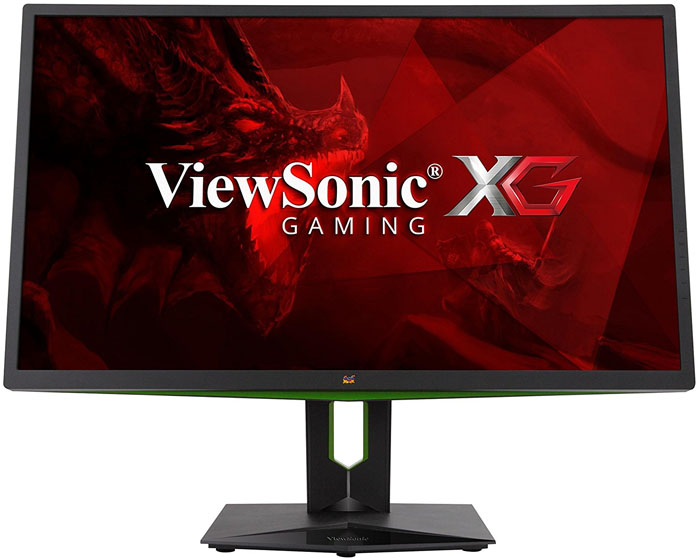
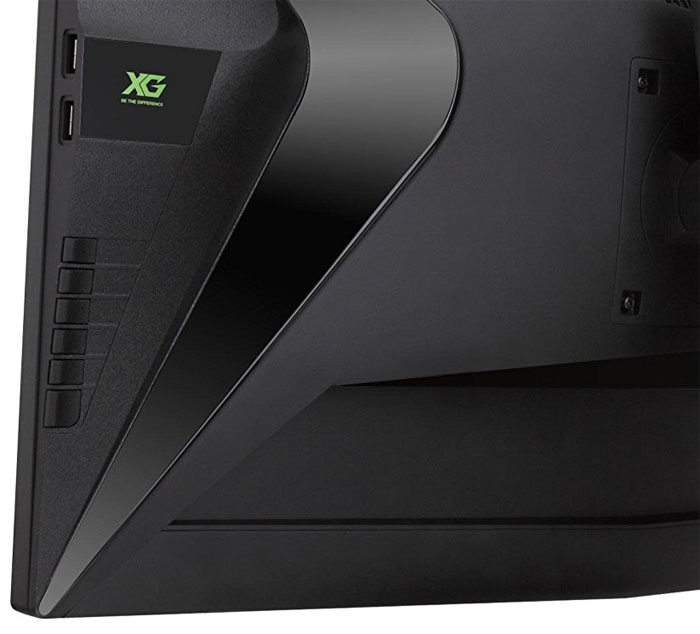
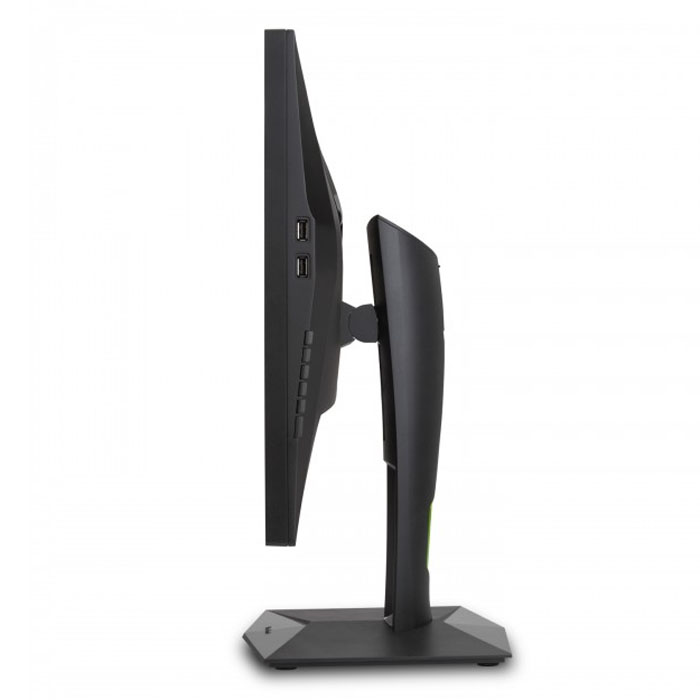
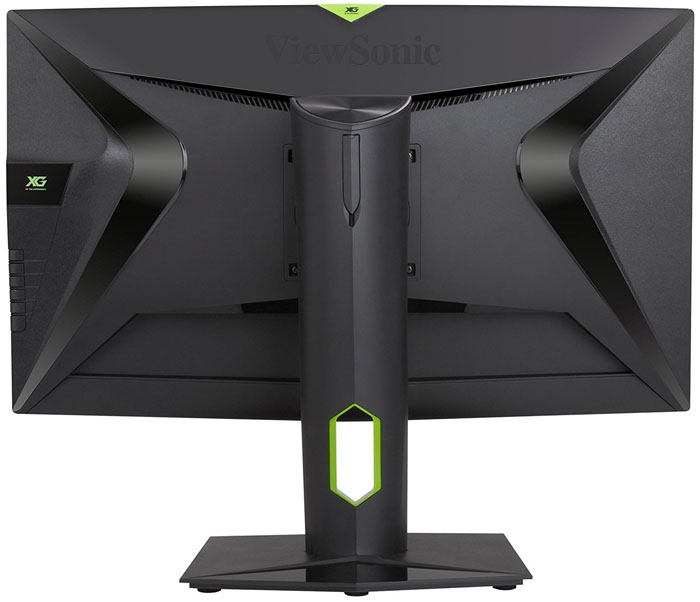
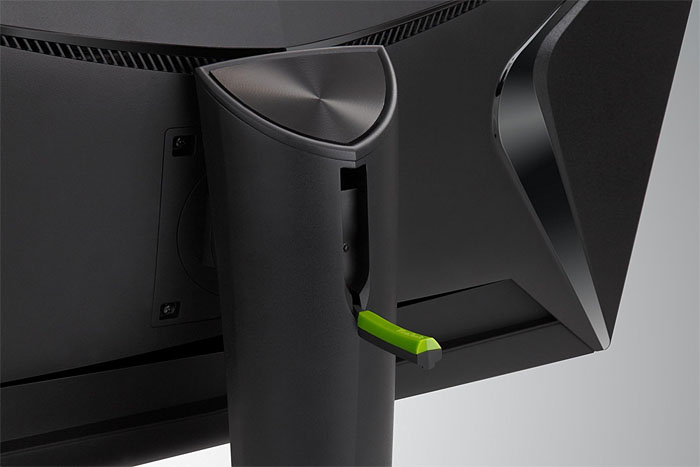

The anti-glare layer is a typical 3H-hardness plastic that is fitted tightly to the TFT for clarity’s sake. The image is quite sharp but our sample suffered from a bit of light-bleed in the corners. It only mars the darkest images and may not appear on all examples.
The bezel is narrow at 11mm at the sides and top. Multiple XG2703-GSs will fit nicely together in a two or three-screen setup. The base is wide and deep and swivels with the panel. It floats just far enough above the desk to avoid rubbing. Swivel is 175° to either side, which means you can turn the screen towards someone sitting across from you. Just the thing to do when you’ve owned someone in a frag-fest. Height adjustment is 4” with 5° forward tilt and 15° back.
The upright has a couple of neat features. Most prominent is the cable management hole which is trimmed in a lime green. This matches the subtle trim found above and below the screen. Also around back is a small flip-out hanger. It took fingernail-breaking force to free it from its closed state. In fact, we had to use a screwdriver to pry it open. Don’t snap it back all the way and it will operate a little more safely. It’s endowed with a thick green rubber pad to keep your headphones from falling off.
The back is nicely styled with a small vent and polished surfaces to offset the sea of black plastic. A 100mm VESA mount is revealed by unscrewing the upright. The tiny speakers fire backwards so a nearby wall will help reflect their thin, weak sound towards you. Take our advice and plug in a decent pair of headphones instead. More ventilation is provided along the top edge, though the XG2703-GS runs very cool, even after long gaming sessions.
Styling dictates a relatively thick side profile that is 3" deep. The right edge contains two USB 3.0 ports, and you can also see the control keys, which feel more like tiny levers than buttons. They click satisfyingly and make OSD navigation reasonably intuitive, though they won’t replace the joysticks we love so much on LG and Asus displays.
The input panel is pretty sparse, like all G-Sync monitors. There is one each of DisplayPort and HDMI only. You’ll have to use the latter to unlock all the XG2703-GS’s adaptive refresh and 165Hz capabilities. HDMI works fine for things like Blu-ray players or gaming consoles that are limited to 60Hz and FHD output. Also down here are the remaining USB ports, one upstream and two downstream.
MORE: Best Computer Monitors
MORE: How To Choose A Monitor
MORE: All Monitor Content

Christian Eberle is a Contributing Editor for Tom's Hardware US. He's a veteran reviewer of A/V equipment, specializing in monitors. Christian began his obsession with tech when he built his first PC in 1991, a 286 running DOS 3.0 at a blazing 12MHz. In 2006, he undertook training from the Imaging Science Foundation in video calibration and testing and thus started a passion for precise imaging that persists to this day. He is also a professional musician with a degree from the New England Conservatory as a classical bassoonist which he used to good effect as a performer with the West Point Army Band from 1987 to 2013. He enjoys watching movies and listening to high-end audio in his custom-built home theater and can be seen riding trails near his home on a race-ready ICE VTX recumbent trike. Christian enjoys the endless summer in Florida where he lives with his wife and Chihuahua and plays with orchestras around the state.
-
dstarr3 "120Hz ULMB... 1440p IPS panel... looking good so far..."Reply
*checks price*
"Sigh... Figures..." -
Dantte Slow, glows like it was built in a nuclear test zone, and no contrast to speak of. But hey, your red is very red, your blue is very blue, your green is very green, and if you stare at your monitor from the side (cause thats how everyone is doing it); IPS is the monitor for you!Reply -
10tacle So who makes the actual panel? LG? Samsung? Regarding the price, I see it on Amazon and NewEgg right now for $650 (US). Considering I paid over $500 for my Dell U2713HM 27" 1440p 60Hz IPS monitor back in 2013, I'd say this is an excellent bargain.Reply
Regarding out of box calibration, you can buy a very good monitor calibration tool like Datacolor's SpyderCHECKR 24 for $50. Well worth the investment if you care about color accuracy on not only your PC and laptop monitors, but your HDTVs. -
10tacle Never mind, I found the answer on another website's review. The panel is made by AU Optronics (merger of Acer Display Technology and Unipac Optoelectronics). Going forward on monitor reviews can you guys please include information on who makes the panel?Reply -
coolitic 3H AG is awful for any high-quality monitor and the low brightness will make ULMB subpar.Reply -
bentonsl_2010 If you read the article you would of seen that they stated the panel is made by AU OptronicsReply -
the nerd 389 Just curious: why do you calibrate to a gamma of 2.2?Reply
The sRGB standard, IEC 61966-2-1:1999, varies between 1.0 and 2.4 across the output range. I understand that the decision to write the standard in that way stems from how the CRTs of the day responded, so it may not apply to LCD screens. -
InvalidError Reply
Don't expect G-sync to get significantly cheaper any time soon as Nvidia has a monopoly over the proprietary scaler it requires. The joys of single-vendor proprietary standards.19705624 said:*checks price*
"Sigh... Figures..." -
10tacle Reply19706303 said:If you read the article you would of seen that they stated the panel is made by AU Optronics
I did not read the first part of the conclusion page which is where it is referenced. So it was my bad. Still, I would expect that info to be mentioned in the introduction page, not the conclusion page.
